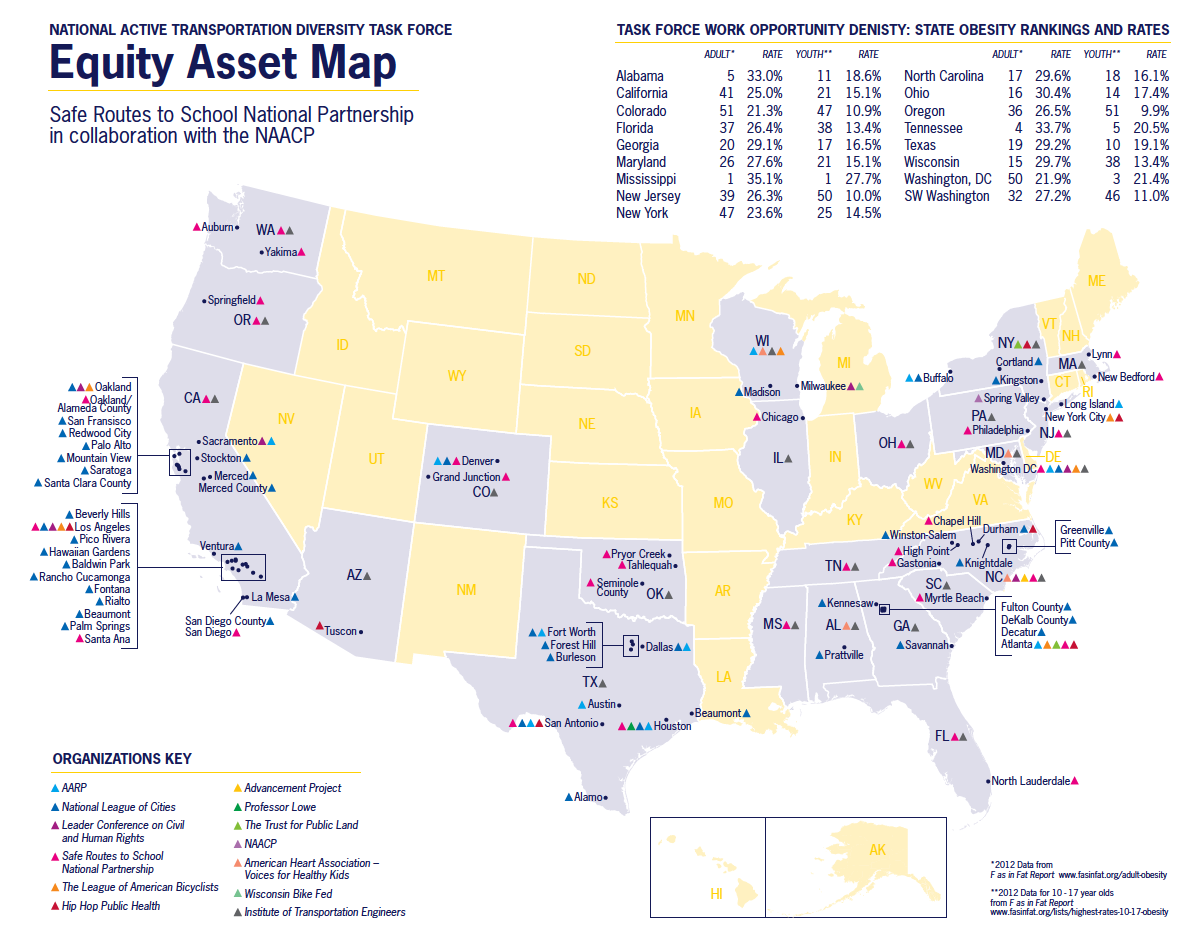 When I came to the Safe Routes Partnership more than a year and a half ago, I was encouraged by our founder Deb Hubsmith to do two things. First, find every way to raise the drum beat of equity in my work, and second, read profusely to gain best practices and tactics to push progress forward.
When I came to the Safe Routes Partnership more than a year and a half ago, I was encouraged by our founder Deb Hubsmith to do two things. First, find every way to raise the drum beat of equity in my work, and second, read profusely to gain best practices and tactics to push progress forward.
One piece that struck me was "Buddy, Can You Spare Some Time? Social Inclusion and Sustained Prosperity in America’s Metropolitan Regions" by Dr. Chris Benner and Dr. Manuel Pastor. In the paper, Benner and Pastor argue that “social equity is correlated with economic growth,” noting that “the stronger studies have provided evidence of not just correlation, but probable causation, with improving social equity actually contributing to more rapid economic growth.” In other words, the ideals of equity within community are not an outlier, an addendum or a side project, but an imperative if change and revitalization is the goal.
As part of our commitment to raising the drumbeat of equity in our work to advance healthy community design and Safe Routes to School, the Safe Routes Partnership joined with a broad array of partner organizations, experts and practitioners to form the National Active Transportation Diversity Task Force, with the goal of engaging in a national conversation and supporting outreach that elevates the design and reality of our streets from a local issue to a state and national issue. The Task Force has been working together for the past year to champion active transportation improvements to increase physical activity in underserved communities.
Together, the Task Force has developed a new mapping tool to aid organizations in collaborating and elevating the work we are doing around equity at the local, state and national levels. The Safe Routes Partnership, in collaboration with the National Association for the Advancement of Colored People (NAACP), developed this Equity Asset Map and companion report to connect our work around equity and active transportation and to identify areas of joint interest between equity advocates and active transportation advocates.
The map is an inventory of places at the local, regional and state level where work is advancing focused on combating gentrification, lack of mobility options, and crime, and on improving school siting, food access, design of bicycling/walking networks, and access to funding investments.
This tool has been designed to cultivate strategic and purposeful collaborative efforts between the task force organizations, community-based initiatives and other partners. As shown on the map, there is great overlap, which implies that there is great opportunity to break down silos and work towards our collective goal of ensuring that every child and ultimately every person can dwell in a community that is safe, accessible, and healthy.
Click on the map to download the full PDF, including organization profiles.
If you have identified a potential area of collaboration based on geography or organization focus, please contact Keith Benjamin at keith@saferoutespartnership.org.


